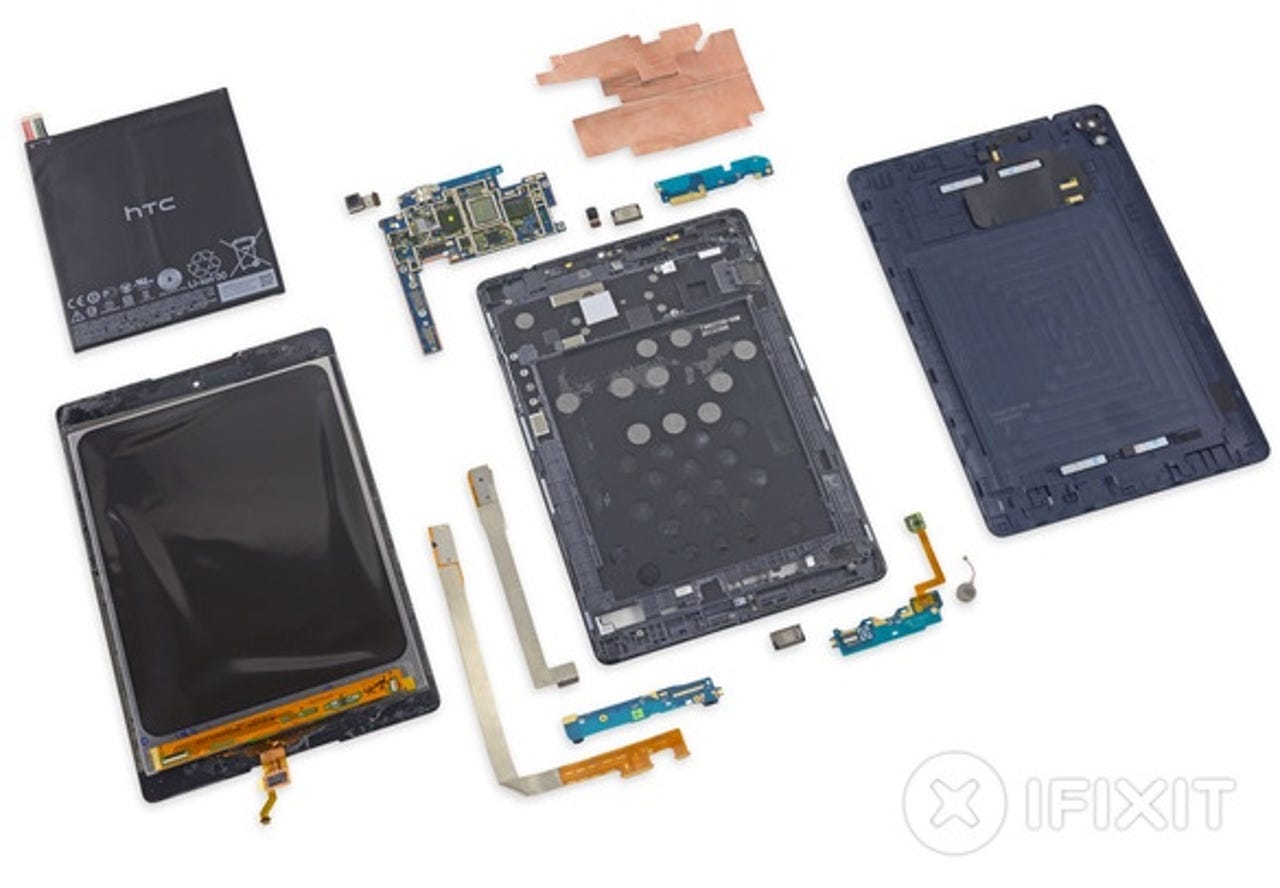Nexus 9 teardown: 'An exercise in corner cutting'


Hardware teardowns give us the opportunity to look beyond the buzz and hype and see exactly what makes our hardware tick, and the latest teardown carried out by repair firm iFixit of the new Nexus 9 shows that you need more than a good processor and screen to make an excellent tablet.
Featured
In an email to ZDNet, iFixit's chief information officer Miroslav Djuric said that a single word that could be used to describe the Nexus 9 was "meh."
"Yes, it has a legit screen and a solid processor," wrote Djuric, "but we’re hardware and repairability connoisseurs—we want the rest of the internals to match the gloriousness of the main components. Yet this tablet feels like an exercise in corner cutting, even though HTC/Google charges $400 to say hello to this little friend."
"It’s like HTC stuffed their glorious CPU and display into a sack full of other parts, and whatever stuck ended up in the Nexus 9."
The display in the Nexus 9 is high-end indeed. It is an 8.9-inch IPS display with a resolution of 2048 x 1536 and features a pixel density of 281 pixels-per-inch. Backing this up is an Nvidia Tegra K1 2.3GHz dual-core processor and a Kepler DX1 GPU.
Other notable parts include:
- Elpida/Micron Technology FA164A2MA 16 Gb (2 GB) RAM
- Samsung KLMAG2GEAC 16GB eMMC NAND flash
- Broadcom BCM4354XKUBG MIMO 5G wi-fi802.11ac/Bluetooth 4.0/FM module
- Texas Instruments TI47CFP91 T65913B3D9
- Broadcom BCM4752 integrated multi-constellation GNSS receiver
In terms of repairability, the Nexus 9 scores a pretty weak 3 out of 10 (where 10 is the easiest to repair). While it is pretty easy to get into the device because the rear case is held in place with clips, it's gets tricky from that point on. The battery is held in place with strong adhesive, and the interior of the device is filled with thin, delicate cabling. Also, the LCD is fused to the front glass (which means that if you break the glass, you'll replace both parts), and the display glass is firmly glued to the midframe, which makes replacements tricky unless you can replace the whole unit.
See also: